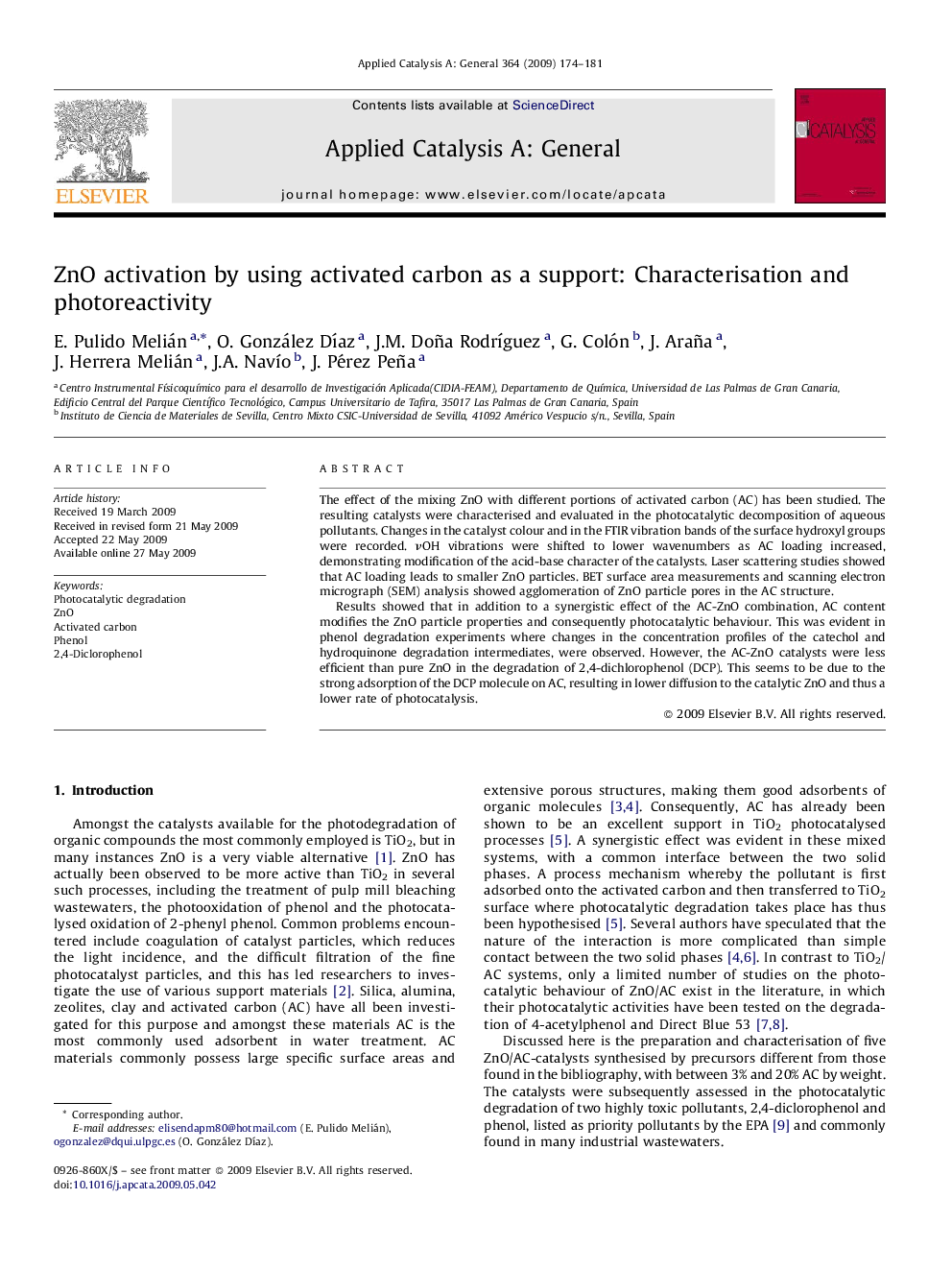| Article ID | Journal | Published Year | Pages | File Type |
|---|---|---|---|---|
| 42878 | Applied Catalysis A: General | 2009 | 8 Pages |
The effect of the mixing ZnO with different portions of activated carbon (AC) has been studied. The resulting catalysts were characterised and evaluated in the photocatalytic decomposition of aqueous pollutants. Changes in the catalyst colour and in the FTIR vibration bands of the surface hydroxyl groups were recorded. νOH vibrations were shifted to lower wavenumbers as AC loading increased, demonstrating modification of the acid-base character of the catalysts. Laser scattering studies showed that AC loading leads to smaller ZnO particles. BET surface area measurements and scanning electron micrograph (SEM) analysis showed agglomeration of ZnO particle pores in the AC structure.Results showed that in addition to a synergistic effect of the AC-ZnO combination, AC content modifies the ZnO particle properties and consequently photocatalytic behaviour. This was evident in phenol degradation experiments where changes in the concentration profiles of the catechol and hydroquinone degradation intermediates, were observed. However, the AC-ZnO catalysts were less efficient than pure ZnO in the degradation of 2,4-dichlorophenol (DCP). This seems to be due to the strong adsorption of the DCP molecule on AC, resulting in lower diffusion to the catalytic ZnO and thus a lower rate of photocatalysis.
Graphical abstractActivated carbon loaded ZnO materials were synthesised, characterised and evaluated in the photocatalytic decomposition of phenol and 2,4-dichlorophenol. Changes in the FTIR vibration bands of the surface hydroxyl groups were recorded. Laser scattering studies showed that AC loading leads to smaller ZnO particles. BET and SEM analysis showed agglomeration of ZnO particle pores in the AC structure.Figure optionsDownload full-size imageDownload as PowerPoint slide
